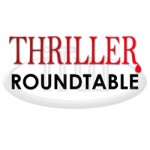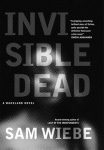

May 16 – 22: “Is it advertising?”
 Some writers love inserting highly specific brand names and editors often pull those out. This week ITW Members Walt Gragg, Dave Edlund, Sam Wiebe, Alan Jacobson, Lynne Constantine and Sasscer Hill discuss what works and when? Is it advertising or are these an instant indicator of one’s personal wealth or whims?
Some writers love inserting highly specific brand names and editors often pull those out. This week ITW Members Walt Gragg, Dave Edlund, Sam Wiebe, Alan Jacobson, Lynne Constantine and Sasscer Hill discuss what works and when? Is it advertising or are these an instant indicator of one’s personal wealth or whims?
~~~~~
 Walt Gragg lives in the Austin, Texas area with his wife, children, and grandchildren. He is a retired attorney and former Texas State Prosecutor. Prior to law school, he spent a number of years in the military. His time with the Army involved many interesting assignments including three years in the middle of the first Cold War serving at United States European Command Headquarters in Germany where the idea for The RED LINE took shape.
Walt Gragg lives in the Austin, Texas area with his wife, children, and grandchildren. He is a retired attorney and former Texas State Prosecutor. Prior to law school, he spent a number of years in the military. His time with the Army involved many interesting assignments including three years in the middle of the first Cold War serving at United States European Command Headquarters in Germany where the idea for The RED LINE took shape.
 Dave Edlund is a graduate of the University of Oregon with a doctoral degree in chemistry. He resides in Bend, Oregon, with his wife, son, and four dogs (Lucy Liu, Diesel, Murphy, and Tenshi). A member of the International Thriller Writers, his debut action/political-thriller Crossing Savage introduced the Peter Savage character and received the 2015 Ben Franklin Silver Medal for Popular Fiction, and was a 2015 INDIEFAB finalist for Best Suspense/Thriller. The sequel, Relentless Savage, was an iBooks pick for best new mystery & suspense, and was a Clue Award finalist and a 2016 INDIEFAB finalist. The adventures of Peter Savage continued with the publication of Deadly Savage in 2016. Soon to be released, Hunting Savage (April 2017) is praised by New York Times and International Best Selling author Steve Berry: “With a hero full of grit and determination, this action-packed, timely tale is required reading for any thriller aficionado.”
Dave Edlund is a graduate of the University of Oregon with a doctoral degree in chemistry. He resides in Bend, Oregon, with his wife, son, and four dogs (Lucy Liu, Diesel, Murphy, and Tenshi). A member of the International Thriller Writers, his debut action/political-thriller Crossing Savage introduced the Peter Savage character and received the 2015 Ben Franklin Silver Medal for Popular Fiction, and was a 2015 INDIEFAB finalist for Best Suspense/Thriller. The sequel, Relentless Savage, was an iBooks pick for best new mystery & suspense, and was a Clue Award finalist and a 2016 INDIEFAB finalist. The adventures of Peter Savage continued with the publication of Deadly Savage in 2016. Soon to be released, Hunting Savage (April 2017) is praised by New York Times and International Best Selling author Steve Berry: “With a hero full of grit and determination, this action-packed, timely tale is required reading for any thriller aficionado.”
 Sasscer Hill, formerly an amateur jockey, was an owner and breeder of racehorses for decades. Her multiple award-nominated mystery and suspense thrillers are set against a background of big money, gambling, and horse racing. Her new “Fia McKee” series, to be published by St. Martins, Minotaur, won the 2015 Carrie McCray Competition for Best First Chapter of a Novel and was a runner up for the 2015 Claymore Award.
Sasscer Hill, formerly an amateur jockey, was an owner and breeder of racehorses for decades. Her multiple award-nominated mystery and suspense thrillers are set against a background of big money, gambling, and horse racing. Her new “Fia McKee” series, to be published by St. Martins, Minotaur, won the 2015 Carrie McCray Competition for Best First Chapter of a Novel and was a runner up for the 2015 Claymore Award.
 Sam Wiebe is the author of the Vancouver crime novels Last of the Independents, Invisible Dead, and Cut You Down (forthcoming, February 2018). Wiebe’s work has won the Arthur Ellis award and the Kobo Emerging Writers Prize, and he was the 2016 Vancouver Public Library Writer in Residence. His short fiction has appeared in ThugLit, Spinetingler, and subTerrain, among other places.
Sam Wiebe is the author of the Vancouver crime novels Last of the Independents, Invisible Dead, and Cut You Down (forthcoming, February 2018). Wiebe’s work has won the Arthur Ellis award and the Kobo Emerging Writers Prize, and he was the 2016 Vancouver Public Library Writer in Residence. His short fiction has appeared in ThugLit, Spinetingler, and subTerrain, among other places.
 During his twenty-four year career in publishing, USA Today bestselling author Alan Jacobson has learned a thing or two about writing engaging stories and creating characters we care about. Jacobson has embedded himself with law enforcement officers across a range of agencies, including a multi-year stint with the FBI’s Behavioral Analysis Unit in Quantico; the DEA, US Marshals Service, ATF, NYPD, SWAT, and local bomb squads. In addition, he’s worked extensively with the US military, Scotland Yard, criminals, armorers, helicopter and fighter pilots, CEOs, historians, combat surgeons, astronauts, rocket scientists, and Navy SEALs.
During his twenty-four year career in publishing, USA Today bestselling author Alan Jacobson has learned a thing or two about writing engaging stories and creating characters we care about. Jacobson has embedded himself with law enforcement officers across a range of agencies, including a multi-year stint with the FBI’s Behavioral Analysis Unit in Quantico; the DEA, US Marshals Service, ATF, NYPD, SWAT, and local bomb squads. In addition, he’s worked extensively with the US military, Scotland Yard, criminals, armorers, helicopter and fighter pilots, CEOs, historians, combat surgeons, astronauts, rocket scientists, and Navy SEALs.
 Lynne Constantine’s love of the written word began early. An avid Nancy Drew reader in elementary school—the highlight of her week was going to the store with her father and buying the next book in the series. When the day arrived that she was able to solve the mystery half way through – she reluctantly set them aside and moved on to other books. For as long as she can remember, she has been prodded to “get her nose out of the book” when vacationing with friends. Her love of mystery and suspense is as strong today as it was back then, and she is a voracious reader of thrillers and suspense. She wrote her first book, Circle Dance, with her sister Valerie. Circle Dance was a legacy of love fueled by the desire to pass on to their children the traditions and experiences unique to them as second generation Greek Americans. Lynne was raised in a close-knit family surrounded by extended family and “adopted” family through the Greek community. Both she and her sister wanted to leave a legacy for their children and future generations of a bygone era. Lynne is a social media consultant and speaker, and is the managing partner of Sound Solutions Consulting Group. She is a contributing editor to International Thriller Writer’s magazine THE BIG THRILL, and a monthly contributor to Suspense Magazine.
Lynne Constantine’s love of the written word began early. An avid Nancy Drew reader in elementary school—the highlight of her week was going to the store with her father and buying the next book in the series. When the day arrived that she was able to solve the mystery half way through – she reluctantly set them aside and moved on to other books. For as long as she can remember, she has been prodded to “get her nose out of the book” when vacationing with friends. Her love of mystery and suspense is as strong today as it was back then, and she is a voracious reader of thrillers and suspense. She wrote her first book, Circle Dance, with her sister Valerie. Circle Dance was a legacy of love fueled by the desire to pass on to their children the traditions and experiences unique to them as second generation Greek Americans. Lynne was raised in a close-knit family surrounded by extended family and “adopted” family through the Greek community. Both she and her sister wanted to leave a legacy for their children and future generations of a bygone era. Lynne is a social media consultant and speaker, and is the managing partner of Sound Solutions Consulting Group. She is a contributing editor to International Thriller Writer’s magazine THE BIG THRILL, and a monthly contributor to Suspense Magazine.
- LAST GIRL MISSING with K.L. Murphy - July 25, 2024
- CHILD OF DUST with Yigal Zur - July 25, 2024
- THE RAVENWOOD CONSPIRACY with Michael Siverling - July 19, 2024
